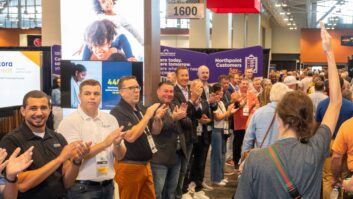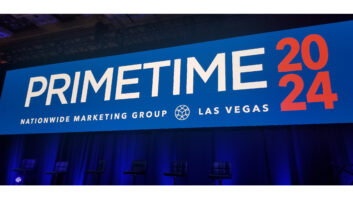Minneapolis — Best Buy CEO Brad Anderson called the company’s decision to accelerate its conversion to the customer centricity model “a major milestone,” and the company will phase out mail in rebates due to customer dissatisfaction.
“We’ve reached a tipping point, and there’s no turning back,” he said.
This year’s expansion will focus on the premium customer segment, or “Barry” stores, which is one of five customer profiles that Best Buy has targeted. Those store types, which feature Magnolia Audio Video home theater shops, will be “aggressively expanded,” according to John Walden, executive VP of the recently formed customer business group.
Walden did not elaborate on the Magnolia expansion, but retail analyst Dan Wewer of CIBC World Markets believes that Best Buy will bring the concept to eight markets and as many as 120 stores outside of its initial California test area. Based on a survey of Best Buy want ads for “Magnolia Home Theater” custom installers on Web site www.jobs.com, Wewer believes those markets will include Boston; Denver; Las Vegas; Minneapolis; New York; Phoenix; Nashua, N.H.; and Washington, in addition to Los Angeles, San Jose, Irvine and Westminster in California.
That scenario places the Magnolia-enhanced Best Buy stores on the home turf of key PRO Group dealers Tweeter (Boston), Ultimate Electronics (Denver) and MyerEmco (Washington).
Similarly, industry consultant and former Tweeter exec Noah Herschman pegged the Magnolia rollout at 100 stores over 18 months during a panel discussion at last month’s Home Entertainment Source Summit in Dallas.
Retail president Brian Dunn acknowledged during the conference call that the company will bring its custom installation services in-house this summer, while expanding the ranks and awareness of Geek Squad, which will begin to aggressively target small businesses.
To support the company’s customer centricity strategy, Best Buy is overhauling its global supply chain and technology infrastructure. The retailer is basing its supply chain model on European food retailing giant Tesco, which it described as “best of breed.” The three-year revamp will include price optimization, supplier integration and RFID tags, and will also allow for tailored market assortments, said chief information officer Bob Willett.
Best Buy has also created an “alliance” with 11 core vendors to eliminate waste from the supply chain and increase speed to market, Willett said.
On the IT side, the company has invested $200 million in infrastructure, including a new point-of-sale system that provides more precise customer data and analytics.
Another focus will be on higher employee retention, which the company hopes to achieve by providing workers with more opportunities, a wider variety of better paying jobs and “a more interesting place to work,” Walden said, without returning to a commissioned structure.
On the product front, general merchandise manager Ron Boire said that Best Buy is planning “a major upgrade” of the center of its stores, where entertainment software is sold. The retrofits will make the sales floors more flexible and allow for quick changes as new gaming software and high-definition DVDs are introduced.
Regarding the latter, Boire reiterated Best Buy’s wish for a unified high-definition format. “Our customers don’t want to be guinea pigs in a format war,” he said.
Boire also announced that Best Buy will phase out mail-in rebates over the next two years, due to, he said, customers’ disdain for the process. But the move also follows a recent decision by the Federal Trade Commission that makes retailers accountable for all rebate fulfillment — even for vendor-sponsored programs — and which cost CompUSA several hundred thousand dollars in make-good payments.
Looking ahead, Boire said the rate of decline in flat panel pricing will accelerate this year, with average selling prices (ASPs) expected to fall another 25 percent to 35 percent. But the lower ASPs will make the TVs more affordable for more consumers, and Best Buy will compensate for their compressed margins by selling more sets and attaching more products and services to the transactions.
“It’s our sweet spot,” he said. “We’ve prepared for it well.”












